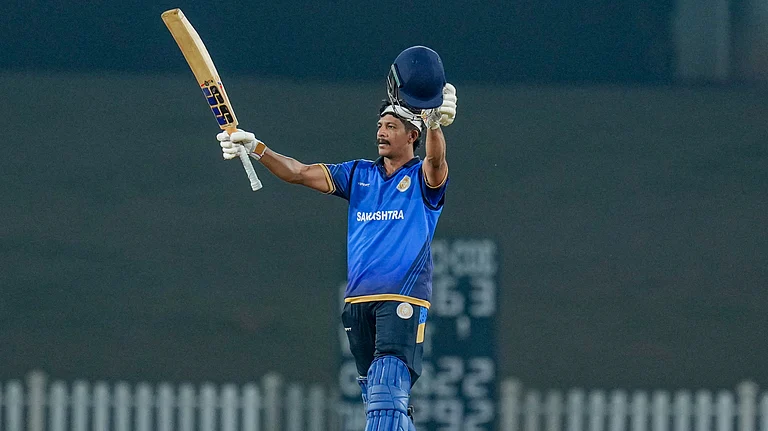When the 70-member newly constituted Uttarakhand Assembly will meet in Dehradun for the first time, following Bharatiya Janata Party's (BJP) historic return to power, there will be something heartwarming for ‘Dev-Bhumi’—the land of Gods.
The number of elected women representatives has doubled this time against four in the first and second elected House after 2002 and 2007 Assembly polls respectively.
There were only five women in the two Assemblies elected in 2012 and 2017.
“Though relatively small, one may note the increasing women participation in Uttarakhand state Assembly. From four women MLAs in 2002 and 2007 to five in 2012 and 2017, we now have eight. I hope that cutting across party lines, they will work together on women-centric issues,” tweeted Anoop Nautiyal, founder of Dehradun -based Social Development for Communities (SDC) Foundation.
Significantly, the ruling BJP will have six women MLAs, one of them Rekha Arya, a sitting cabinet minister, making her hat tricks from the Someshwar Assembly seat of Almora district along with Congress’s Mamta Rakesh entering the Assembly third time from Bhagwanpur.
The opposition Congress had given tickets to five women candidates, of which only two could get elected, as one of them Anukriti Gosain, a model and TV anchor-turned Congress candidate lost election from Lansdowne.
Notable winners among women candidates also include Ritu Khunduri, daughter of former Chief Minister Major General (Rtd) BC Khanduri, who avenged her father’s defeat in 2012 Assembly polls at Kotdwar constituency by winning against Surinder Singh Negi of the Congress.
Another first–time winner will be Savita Kapoor of the BJP from Dehradun, who defeated her Congress rival by 20,938 votes.
Former Chief Minister Harish Rawat, who lost his Lalkuwa Assembly seat to Dr Mohan Singh Bisht of the BJP, is seeing the rise of his daughter Anupama Rawat winning from Haridwar (rural ) on the political horizon.
Rajesh Pandey, a Dehradun-based journalist says, “It’s better late than never. There were a fairly high number of 63 women among total of 632 candidates contesting the poll this time. If eight women have won, it’s definitely a good sign in Uttarakhand. The parties will certainly be forced to field more in the next polls."
Yet, the rise of women is also a factor that gave the BJP a massive mandate that has come surely in the backdrop of a higher number of women participating in the poll.
The turn–out of the women in Uttarakhand on February 14 polling at 70 constituencies was 67.20 per cent in the state against 62.35 per cent males in the overall 65.37 per cent polling.
Neha Joshi, National Vice-president of Bharatiya Janata Yuva Morcha, says, “While handling social media for the organisation, I have myself noted a vast awakening among the women about their voting rights. It’s gradually growing as the state is progressing after coming into being in 2000. The number of women coming to vote was almost 7 per cent higher in 34 to 35 constituencies. The trend is very much reflective of the change happening at grass-root level."
She also claims that of 13 Zila panchayats, women are holding 10. The time is not far when the number of women in the Assembly will double and triple in the next 10 years. Neha claims that the women in the hills were motivated to vote for the BJP because of welfare schemes, notable of these free ration reaching homes and a loan scheme of the state for rural women.
Many attributes to women awakening not just as political empowerment but as historic. The movement of statehood – the demand for a separate state of Uttarakhand and its bifurcation from Uttar Pradesh -- was led by women. Few of them also became victims to firings -- one of the major incidents at Muzaffarnagar on October 2, 1994.
In the Chipko Movement – which attracted the attention of the world in the 1970s to save the forests from illicit and organised felling, women of Uttarakhand were at the forefront. Few of these legendary women included Gaura Devi, Suraksha Devi, Sudeshna Devi, Bachni Devi, Chandi Bhatt and Virushka Devi.
Dr Richa Ginwal, a senior faculty of Economics at Kumaun University, Nainital says that despite literacy and household issues facing rural women, their awareness level is really an admirable thing. Though the women are not sole decision-makers in many household matters in rural areas yet when it comes to voting rights, the women -- both older or young -- invariably hold sway.
“Much of the credit for the BJP’s victory in the March 14 polling must go to women, whose higher participation changed the scene, broke many myths in the state. This is a direct impact of benefits of the central schemes like free ration implemented for the poor families during the Covid time. They may not be much aware of their MLAs but definitely knew that it is Prime Minister Narendra Modi behind such direct benefits”, Dr Ginwal says.
The Congress in its poll manifesto may have promised benefits like LPG cylinder at Rs 500 and 40 per cent reservation of women in police, or highlighted inflation during the campaign but could not win the confidence of the women.
The party, even though it had tried to make women the focus of its campaign in Uttar Pradesh, it lacked a real connection with women voters, who rather voted for Modi‘s schemes.
So, slogans like, “Ladki hun, Lad Sakti Hun", could not catch up well on the ground.
In Uttarakhand, the Congress changed the ticket for Sandhya Dolakoti at Lalkuwa –where Harish Rawat contested the poll unsuccessfully. Barkha Rani another candidate was dropped from Jwalapur.
Sarita Arya, a former Congress MLA, who feared she would not be given a ticket, joined the BJP and got elected from the Nainital Assembly seat by 7,881 votes defeating Congress candidate Sanjeev Arya, who was earlier in BJP.
In Uttar Pradesh, the number of women candidates in the sixth phase was 62.62 per cent against 51.03 per cent males. Even in the fifth phase, women-led over men by significantly higher at 60.96 per cent against 56.07 per cent.


























